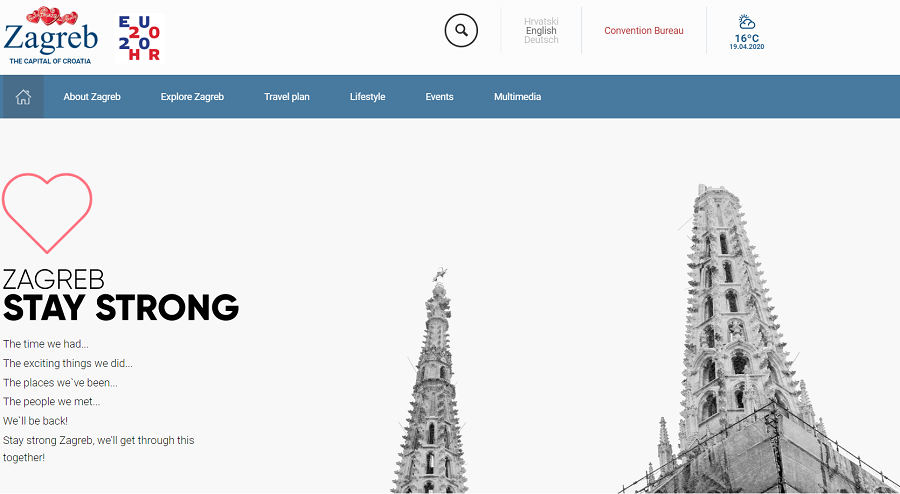Construction of Modern Building for Zagreb Earthquake Victims Planned
A minimum of 270 new apartments for Zagreb earthquake victims who suffered damage to their homes are planned, along with a garage, a green roof, air conditioning and much more, the City of Zagreb stated, explaining that the entire building will cover approximately 25,500 square metres.
As Poslovni Dnevnik writes on the 23rd of May, 2020, the new building designed with Zagreb earthquake victims in mind won't become a reality soon, but it will eventually - the tender is ready, they just need to announce it and the new building in Podbrežje can slowly start to ''spring up''.
The plan is for the fifth building in the settlement, which, according to the Zagreb housing model, should boast had a total of eleven building. The city says that the new nine-storey building will initially be exclusively for those who lost their homes in the Zagreb earthquake, according to a report from Vecernji list.
They have prepared the criteria according to which the project documentation of the building called "A11" should be prepared, and next week it should be released for public bidding. It is estimated that the entity who will prepare the documentation will do it for 5.2 million kuna, which is the amount without VAT. An underground garage, a green roof, video surveillance and air conditioning in each apartment are just some of the things the designers will have to come up with and what they will have to find the best solution for.
''The plan is to construct a minimum of 270 apartments,'' they stated from the City Administration, explaining that the entire building will cover approximately 25,500 square metres. Approximately 800 more square metres will be reserved for business premises which, just like in the four currently constructed buildings, will be located on the ground floor of the building.
As far as the distribution of squares is concerned, most will be one-bedroom apartments, more than a third of the total planned, followed by one-and-a-half-bedroom, then two-bedroom, three-bedroom, two-and-a-half-bedroom and, finally, three-and-a-half-bedroom apartments. To be completely precise, there will be 104 one-bedroom apartments, 77 one-and-a-half-bedroom apartments, 31 with two rooms, 29 with three rooms, while there will be 23 two-and-a-half-room apartments and only six three-and-a-half room ones.
The materials from which the apartments should be built have already been prescribed, meaning that the building's designers need to think about security doors, ceramic tiles in the bathrooms and kitchens, parquet in the rest of the apartment, interior wood and exterior PVC joinery, waterproofing, as well as the partition walls which the City of Zagreb wants to be made of cardboard plaster. All in all, the new or fifth building of the settlement in the neighbourhood behind Siget will look about the same as the previous four, which is not entirely strange, since the plan for the appearance of the neighbourhood was made about six years ago.
When it comes to the question of just how much will these 270 new apartments cost approximately, we can't know the answer to that yet.
''Until the project documentation is ready, which will enable us to announce tenders for contractors, we can't know, but the estimate is around 45 million kuna,'' they stated from the city.
Make sure to follow our lifestyle page for more.
Zagreb Budget and Related City Companies Under Huge Pressure
The Zagreb budget and the city companies that also rely on it are now finding themselves beginning to buckle under the pressure and strain caused by the economic crisis.
As Poslovni Dnevnik/Gordan Kozulj writes on the 22nd of May, 2020, the past few challenging months have shown how difficult it is for the world's largest economic powers to cope with the problems caused by the coronavirus pandemic.
The majority of the world is now entering the biggest economic crisis since World War II as the coronavirus pandemic continues to bite. But add to all of that, the devastating earthquake as well as the unenviable starting positions in terms of liquidity and indebtedness also had their effects, meaning that we can now get some sort of perspective of the state of the City of Zagreb and its related city companies.
The two-month shutdown of the economy and the damage caused by the earthquake led to a major blow to city finances, the Zagreb budget hasn't been immune.
The City of Zagreb is recording lower tax revenues, expenditure expectations are rising due to the need to renovate key pieces of city infrastructure, and liquidity problems have been going on for some time. The Croatian capital city has very little room for maneuver to absorb unexpected external shocks within the Zagreb budget, especially when it comes to the synergistic effect of multiple destructive events.
The city's expenditures have been burdened to quite a significant degree in the long run when it comes to subsidies to city enterprises or, like employee salaries, they're concretised by collective agreements. At the same time, freezing the prices of services, stopping work (eg charging for public parking) and reducing the sale of services (eg tickets for public transport) due to the introduction of quarantine measures, further aggravated the unenviable financial position of the Zagreb budget and related city companies, as it increased their dependence on that same suddenly enfeebled city budget.
The only way for the Zagreb budget and the city companies that are so closely tied to it to service their obligations and maintain liquidity is to increase borrowing, which is already being done on a rather large scale.
In fact, the collection of bank offers for a new loan for Zagreb in the amount of 350 million kuna is currently in process. It's good to remind ourselves that just before this crisis struck, Zagreb Holding additionally borrowed in the amount of 150 million kuna, as did ZET by contracting a loan in the amount of 537 million kuna for the construction of the much talked about Sljeme cable car.
Somewhat unnoticed in the midst of the coronavirus crisis at the end of March this year was the information that the credit rating agency Standard and Poor's (S&P) changed the outlook of the City of Zagreb from stable to negative, confirming its long-term credit rating of "BB".
More than ever, Zagreb's very functioning during these challenging times depends on decent cooperation with the central state. Namely, the capital expected the financial olive branch to come from the state through the adoption of a special law that would regulate its reconstruction and its co-financing.
In addition, the city initiated a proposal to the government to amend three laws related to the financing of local and regional self-government units (the Law on Financing of Local and Regional Self-Government Units, the Budget Law and the Budget Execution Act) so that it could borrow indefinitely. However, with the recent decision to dissolve Parliament, the possibilities for the timely adoption of such a new law or amendments to existing ones have been shut off.
The second lever to save liquidity the City of Zagreb is seeking lies in the sale of its property. It expects the fastest and most financially significant realisation in this sense to come from the sale of shares it holds in a company called APIS IT. But even in this case, the only serious buyer may be the state itself, which also showed interest in buying several years ago, but currently - the probability of this transaction is small indeed. From all of the above, the question arises whether Zagreb, in its most difficult moments in the last few decades, has been left without an important partner?
The only thing left for the Zagreb budget is to transform its crisis staff from one focused on protecting the resident population from the new coronavirus, to some sort of ''Financial Crisis Management Headquarters''. The establishment of such a headquarters requires the establishment of an expert team, strengthened by an agile organisational structure and an IT tool for generating various simulations.
In this way, the burdened Croatian capital would have the ability to make the quick and informed decisions needed to respond to these troubling financial challenges. The existence of professional support is not in question, it is only a question of the will and determination of the city itself.
* The author of this text is a senior manager in the business consulting department of Deloitte's consulting service
For more, follow our business page.
Minister Says Zagreb Earthquake, Reconstruction Process Should Not Be Politicised
ZAGREB, May 17, 2020 - Culture Minister Nina Obuljen Korzinek has said that the March 22 earthquake in Zagreb and the reconstruction of the city should not be politicised, calling on all interested stakeholders to join in public consultation on a bill on the reconstruction of Zagreb following the March 22 quake.
Obuljen Korzinek's comment was a response to a protest staged on Sunday outside government and parliament offices by about 20 people, leaders of the parties We can! Zagreb is ours!, New Left, ORaH, Workers Front and For the City, and their supporters who are dissatisfied that the parliament will be dissolved before the law on the reconstruction of Zagreb is adopted.
Last Friday the government put to public consultation a bill on the reconstruction of buildings damaged in the quake that hit Zagreb and Krapina-Zagorje and Zagreb counties, Obuljen Korzinek told Hina, calling on interested stakeholders to put forward their proposals and join in the process of consultation as the reconstruction would last for years and would be a very complex process.
Speaking of emergency measures that have been taken in the meantime, the minister said that HRK 141 million had been secured through a budget revision for the emergency reconstruction of buildings and purchase of new boilers and that a decision had been made to pay the rent for people whose property had been made unlivable by the quake.
"The government is preparing a set of measures, work has been underway to appraise the damage and prepare documentation for funding from the European Solidarity Fund, a loan from the World Bank and other sources of financing," she said.
Government to Pay Rent for People with Homes Damaged in 22 March Zagreb Quake
ZAGREB, May 14, 2020 - The government decided on Thursday to finance rent for those people whose property was damaged in the 22 March quake in Zagreb and its environs and Krapina-Zagorje and Zagreb counties, defining a maximum amount of HRK 70 per square metre of the rented space.
Owners of family homes, apartments and protected renters whose property has been declared unfit for occupancy, will have the cost of rent subsidised.
Rent will be paid to owners who do not have any other accommodation within 20 kilometres of the damaged property. The absolute amount is restricted by the size of the rental per each member of the family and price per square metre.
Rent will be covered to a maximum amount of HRK 70 per square metre.
"That means that a single household renting an apartment will receive a maximum of HRK 2,450 a month which covers the cost of a 35 square metre flat for a price of HRK 70 per square metres while a family of four will receive HRK 4,550 a month which can cover the cost of a 65 square metre flat for HRK 70 per square metres," State Assets Minister Mario Banozic explained.
By 11 May a total of 19,459 buildings had been inspected and 1,112 have been categorised as not fit for use due to the damage caused by the 22 March quake.
The government estimates that the average cost of rent will amount to HRK 3,500 while the funds needed to implement this measure amount to HRK 52.5 million and will cover the period until 1 September 2021.
As these are acceptable costs, the government will apply to the EU solidarity fund to cover the costs of this subsidy.
(€1 = HRK 7.55)
Handsome Payout for Households Damaged in Zagreb Earthquake - When?
As Poslovni Dnevnik writes on the 5th of May, 2020, the Croatian Government should finance the repair of chimneys and boilers with payouts of 20,000 kuna to every household that suffered in the devastating Zagreb earthquake just over forty days ago.
The welcome ruling announced the introduction of a special law to help with reconstruction after the Zagreb earthquake, but naturally, everyone is now wondering when that law will see the light of day.
Construction Minister Predrag Stromar also said when that could be expected.
"On March the 22nd, we immediately started drafting that law and said that we wouldn't just leave people to fend for themselves [in regard to the Zagreb earthquake]. We did everything, we know how much it will all cost. In the next week or two, we'll make all the decisions we need to make in order for the funds to be expected and as soon as the law comes into force we'll be able to start paying those funds out. It will have to be passed in the supplementary budget, we'll have to have it in our account. It will be very soon, in a week or two,'' said Predrag Stromar in an interview for RTL Danas.
He doesn't agree with the statement that we have been waiting for that law to be introduced for a long time.
"Some people have asked me why that law has been finished so quickly. The law is done, it's ready, it's in the procedure, in a few days it will go to public debate, and then from public debate to Parliament. We talked to those in the profession, there are a few different thoughts on how to solve problems. We said we'd help people and we're helping them. We have come to an agreement with everyone, with the Prime Minister, with the ministers, with those in the profession, with the chambers… So, there we go, the law is ready. I expect it in the Parliament soon, in a maximum of seven, maybe eight to ten days,'' said Stromar, adding that he expects the members of parliament to vote on the law before dissolution due to the upcoming parliamentary elections.
"This law [on the damage caused by the Zagreb earthquake] is very important to people. It's important for them to know when their homes are going to be renovated, every day [which passes] is important to them,'' said the Minister.
Commenting on the upcoming parliamentary elections, Stromar said HNS will first hold its internal party elections on May the 24th, in which it will elect a new president and a new party leadership.
"We're going to talk to smaller parties, those that have similar programme, those which are the most similar to us," Stromar said.
For more on the Zagreb earthquake, follow our lifestyle page. For more on the domestic political scene, follow our politics page.
Croatia Reopens Museums, Zagreb Earthquake Creates Limitations in Capital
As Sasa Paparella/Poslovni Dnevnik writes on the 1st of May, 2020, large European museums such as the Rijksmuseum, the Kunsthistorisches Museum in Vienna or the Stedelijk Museum in Amsterdam are losing between €100,000 and €600,000 a week because of the coronavirus pandemic. Croatia's museums are reopening their doors, but the Zagreb earthquake has left traces on those here in the capital...
As museums reopen across Croatia, only three museums in Zagreb opened their doors this week: the Museum of Contemporary Art (MSU), the Klovićevi Dvori Gallery and the Typhlological Museum. According to the Ministry of Culture, three more museums are expected to open on Tuesday, May the 5th: the Ethnographic Museum, the Technical Museum and Atelier Meštrović.
The recent Zagreb earthquake: There was no evacuation plan in place for the collections
In the recent Zagreb earthquake, several museums in the capital were badly damaged, and now it appears that there was no plan to evacuate their collections in place at all.
''The museums arrange evacuation of the building with their founders. In this regard, the Ministry of Culture is currently finding a solution for two museums - the Croatian History Museum and the Croatian Sports Museum - whose buildings have been marked in red, meaning it isn't possible for them to continue their operations without firstly thorough renovating the building. In addition to them, the Croatian School Museum also has a red mark on the building,'' reads a statement from the competent ministry, whose jurisdiction includes other museums which suffered damage as a result of the Zagreb earthquake.
The Zagreb earthquake also severely damaged several museums under the jurisdiction of the City of Zagreb: The Archaeological Museum, MUO, and the Croatian Museum of Natural History. Poslovni Dnevnik sent an inquiry to the City of Zagreb, but they're yet to receive an answer as to whether they had a plan in place for where the materials would be temporarily moved.
Most museums of national importance are located in Zagreb
Culture Minister Nina Obuljen Korzinek made a decision this week to implement a list of the damages caused by the Zagreb earthquake to museum materials. The damage list will be compiled by museum experts in coordination with the Museum Documentation Centre (MDC).
According to data from the MDC's Register of Museums, Galleries and Collections in the Republic of Croatia, in the City of Zagreb alone, there are 41 museums (which include displaced collections too) containing 3.5 million or 57 percent of all museum objects in Croatia in 615 museum collections.
According to the Museums Act, the deadline for completing the inventory and the entry of museum material and documentation in the Register of Cultural Property of the Republic of Croatia is December the 31st, 2020.
Back in the middle of December 2019, a mere few months before the Zagreb earthquake struck, a conference on the Protection of the Cultural Heritage of the City of Zagreb in Crisis was organised by the Office for Emergency Management. The presentation then concluded that "the investment funds provided by the museum's founders are insufficient for adequate preventive protection," and that "reconstructions mainly regard cosmetic modifications but not structural reinforcements."
According to data from the MDC website, as much as 40 percent of the museum and documentation materials of Zagreb's museums are still not inventoried, and only nine percent of the total number of museum objects have been digitised. Most museum buildings are historic and not purpose built, and in the 21st century, only the Museum of Contemporary Art has been purpose-built, which already lacked storage space.
Safeguards containing the largest number of items are housed in the basements or attics of (old) buildings in adverse microclimatic conditions, at risk of flood and sewage damage, as well as fire and damage to installations.
Clearly, there will be no speedy return back to normal...
Concerning the other, global problem which is affecting the museum profession, the MDC has published the results of the Network of European Museum Organisations (NEMO) study entitled: The Impact of COVID-19 on Museums in Europe and the World.
"According to the first results of this survey, which was being conducted until April the 17th, 2020 at 650 museums in 41 countries, it's clear that there will be no rapid return to normal," concluded the study, which included museums from all 27 EU member states and nine Council of Europe member states. Various museums from the US, the Philippines, Malaysia, French Polynesia and Iran also responded.
Most museums (92 percent) in Europe and around the world are closed due to measures to prevent the spread of the coronavirus infection. By closing their doors to visitors, many museums have already experienced, or will feel, a drastic loss of revenue. This is especially true of larger museums, as well as those in tourist zones that have reported a financial loss in the range of up to 80 percent of their normal revenue, which is increasing every week due to the complete blockage of any tourist activities, but also because of the possibility of continued restrictions in the summer.
Some museums will unfortunately close their doors permanently.
This means that 30 percent of museums are losing up to €1,000 a week, 25 percent of museums are losing up to €5,000 a week, 13 percent are losing up to €30,000 a week, and five percent of museums are losing more than €50,000 a week. As touched on previously, large museums, such as the Rijksmuseum, the Kunsthistorisches Museum in Vienna or the Stedelijk Museum in Amsterdam, are losing between €100,000 and up to €600,000 a week.
Private museums haven't provided any precise numerical data, but since most of their profits come directly from sales, some have already indicated that they lost their entire budget during their closure, and the fear is that the end result of the coronavirus crisis will be the permanent closure of their institutions.
For many of the closed museums, reopening dates haven't yet been solidly determined. Museums who have responded to the survey predict that they may open their doors to visitors no later than September 2020.
When it comes to other sources of revenue, the survey says many museums report that they have already accessed or will be accessing national funding programmes for this crisis situation. These programmes mostly include coverage of wage expenditures and lost income.
Museums from 12 countries report that discussions on crisis funding programmes for culture are ongoing, in eight countries such funds already exist, and museums from 15 countries state that there is currently no crisis funding programme operating in their countries. Such programmes vary from country to country - some applied exclusively to publicly funded institutions and some exclusively to freelance professions. Most museums still haven't needed to lay off staff. About 70 percent of museums report that they have modified their employees' tasks to meet the current needs, and 50 percent of museums said more than 80 percent of their employees are currently working from their homes.
More than 60 percent of museums have increased their online presence.
However, the situation is not the same for staff on part-time contracts, nor is it the same for volunteer programmes that have been completely suspended in most museums, the survey said.
More than 60 percent of museums have increased their online presence since they've been closed, while 13.4 percent have increased their budget with online activities. Most museums use social networks more than they did before, making use of hashtags and presenting individual items to their audience.
Additionally, the number of virtual tours and online exhibitions has increased. Of the museums that responded to the survey, 40 percent have noticed an increased number of online visits since they've been closed to the public. Of that percentage, 41 percent are seeing a weekly increase in visits to their sites by up to 20 percent, and 13 percent of them are seeing an increase of as much as 500 percent a week.
The most popular tools and platforms for the internal communication of museum staff working from home turned out to be Zoom or Skype for conference video calls, and for chat - Microsoft Teams and Whatsapp.
Two-thirds of museums have increased their activities on social networks, almost 80 percent of them use mostly Facebook, and almost 20 percent use Instagram as a platform. A large number of museums are considering increasing their activities in podcasts, live streaming and game creation.
Make sure to follow our lifestyle page for more.
Reflections on the Zagreb Earthquakes, 1 Month Later
April 24, 2020 - A month after the Zagreb earthquakes of March 22, reflections of a Zagreb resident living with the new reality.
It's been more than a month since the terrible Zagreb earthquake that woke up the city early in the morning of the 22nd March. A month seems like a long time in a crisis, which is why you might think a lot has changed since and things started getting back to normal again. It’s true, some things changed. With dozens of smaller aftershocks, residents of Zagreb became true experts in guessing the exact magnitude of earthquakes. We crashed the Last Quake servers a few times, searching for its aftershocks reports. Just the other day, I thought it was nice to get to the point when I received more notifications from Rain Alert, on a sunny day, than from Last Quake. And then, on the 23rd of April, there was that rumbling sound again and a strong kick. This could be between 3 and 3.5, I thought. And it was true, everybody in the city guessed with ease - a 3.2 earthquake brought back the stress and all of the disturbing thoughts: shouldn’t this be over by now? Remember that year when a stronger one hit 15 days after a pretty big one? Is this still an aftershock… or god forbid a foreshock? I don’t think we’re never going back to normal!
I started off on a lighter note, but there’s nothing light about how we feel here in Zagreb. We might have gained new seismographic superskills since the 5.5. earthquake. Other than that, nothing has really changed. The city and its residents still haven’t received much help.
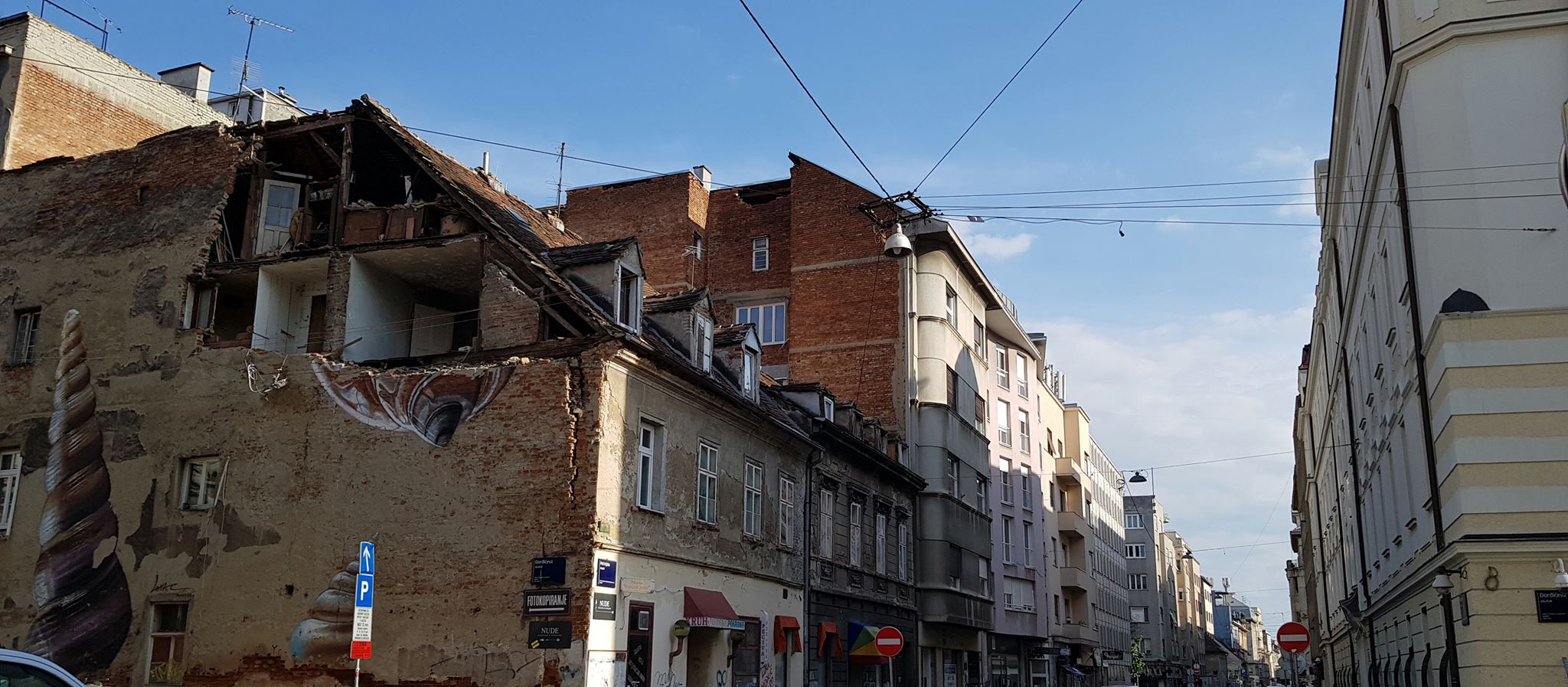
A few days ago, Zagreb lost the top of the second cathedral spire. The southern one had already fallen during the earthquake. The northern one needed to go because of structural damage. This hurt us again. I’m perfectly aware the spire was dangerous and unsafe. However, I can’t fight the feeling - the moment they took it off, I felt a strange disappointment and I thought how they conveniently erased the damage. They flattened the scar and now you can’t even spot the wound. This will definitively help us forget faster.
People wonder what will happen with the cathedral, when do they plan to renovate it? Great question. It was painful for me as well to watch the top of the second spire being demolished. I’m not sure if I will ever forget the painful feeling of disbelief when I saw the first spire damaged in the earthquake from up close. However, now, a month since the earthquake, with dozens of unsafe schools and student residences, it seems to me there are even better questions out there. Such as, what’s the plan if Croatian students go back to their classrooms before the summer? The real question is, what would happen if Zagreb was struck by this exact same earthquake, without coronavirus lockdown to cover its true damage? Is there some kind of a plan for cases like these in our town, or in other Croatian regions that face the same danger? Without the coronavirus, our daily lives were supposed to continue by now. This is simply not possible for many. Thanks to social distancing, we can’t easily spot other people’s suffering and we simply can’t comprehend the real damage.
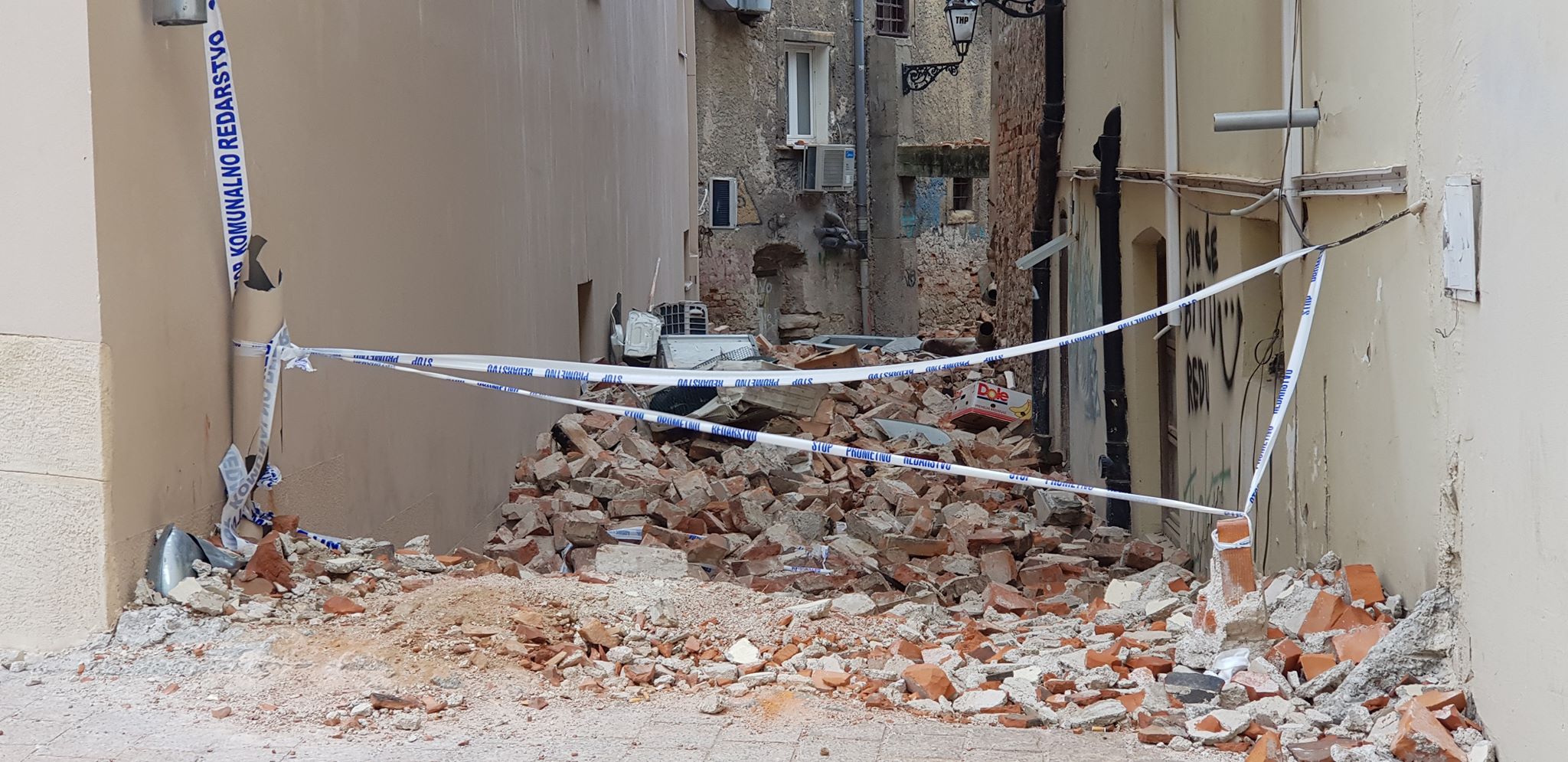
In the beginning, there was a lot of talk about just how lucky we are the earthquake happened early in the morning, in the midst of lock-down… The moments of the earthquake are behind us. Today, I dare to think that, what seemed to be a lucky circumstance, turned out to be the worst of luck – for the very city. The incapability of the authorities still isn’t completely exposed. At the same time, the possibilities for corruption and mishandling the consequences are infinite. I wonder who’s the lucky one?
The magnitude of the earthquake was precisely enough to throw hundreds out of their homes, to cause a terrible condition for many buildings, while at the same time, Zagreb is still pretty on the outside. You could walk around certain streets and barely notice that anything happened if you didn’t know about the earthquake. So who’s the lucky one here? People inside these buildings who don’t know what’s more dangerous – to use the staircase or the elevator? The ones who count cracks in the walls instead of sheep before they go to sleep? Real lucky ones. Or the ones placed in student dormitories? Good for them.
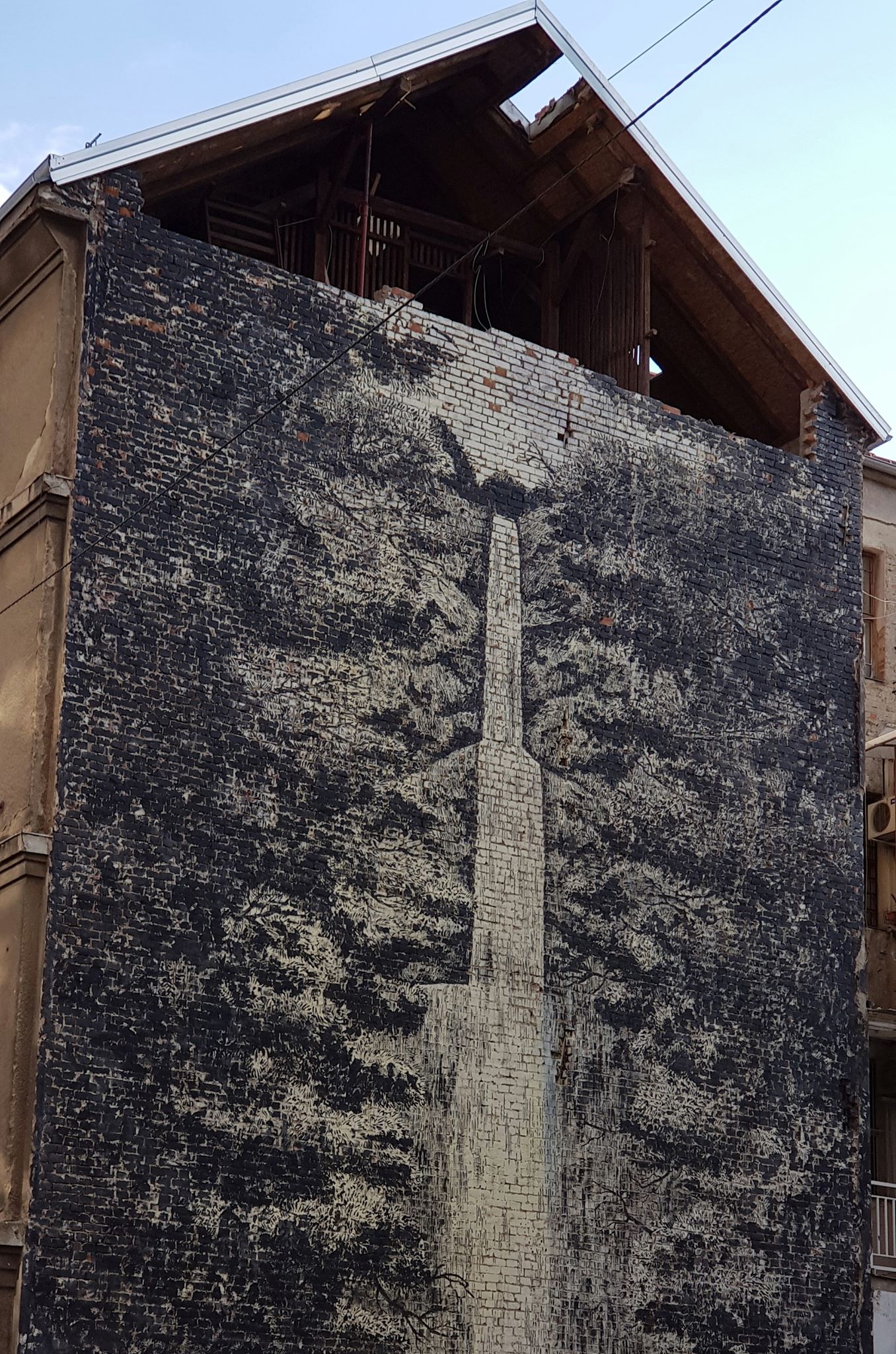
Right now, we can’t help but think for a second of a stronger earthquake that would cause all of us to lose our homes. But we just take a deep breath and try to think of something else. There’s a sense of bitterness and helplessness in the air. Art historians and architects are the only ones who still have the strength to try and influence the urgent renovation law. They keep warning about the fact the law doesn’t care about the city. And that it doesn’t even care about its people (the experts are conveniently being accused of putting pretty facades in front of human destinies).
It’s not comfortable to watch the demolition of a part of your cathedral spire. It’s not nice to spot a red sticker with the word “Unusable” on your own primary school. But to tell you the truth, watching the parts of the city fade is something we’re used to. In recent decades, we’ve lost so many parts of our lives through the neglectful actions of the city authorities. I’m not even going to try to explain, but all of the Zagrebers will understand how a single magnolia tree can be worth fighting for, and the desperate feeling when the fight is lost. At least, the top of the cathedral spire wasn’t taken away from us by someone of flesh and blood.
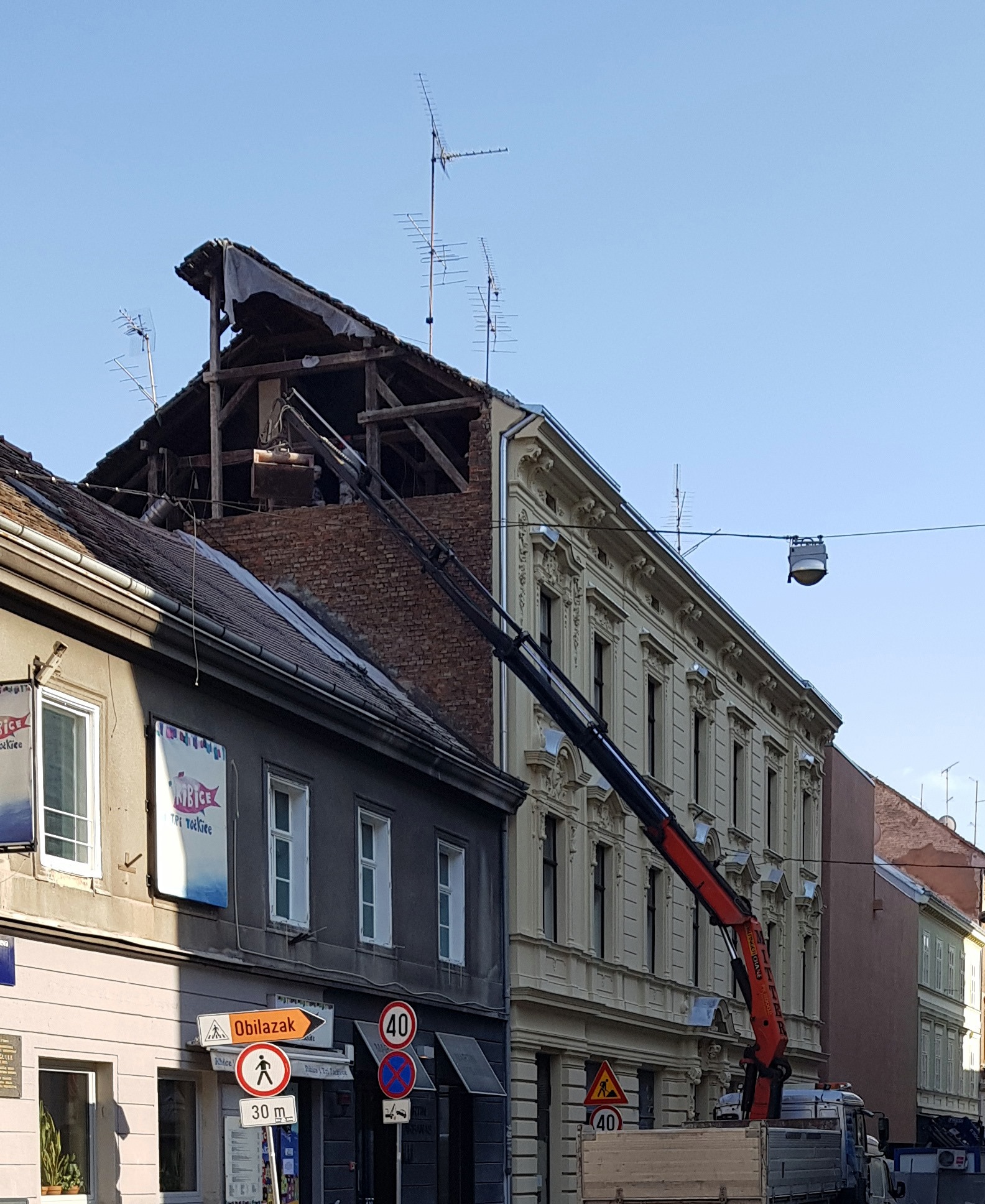
Today, more than a month since the earthquake, that’s the scariest thing. For a moment or two, we feel like we can’t really preserve our city. It’s been slipping through our fingers for a long time now. And the earthquake… it didn’t expose the incompetence of the authorities or anything we didn’t already know. It didn’t destroy the town in its seconds of terror. Just like with the cathedral spire, it just scratched the surface. However, on that 22nd of March, the earthquake took away the safety of their own home for some people, and gave the tools to accelerate the fading of the city to others.
Many of us can’t stop thinking – what is more ethical? Is it the priority to give people a safe place to live in no matter the cost? Or should the real priority be careful renovation and the respect of heritage and the city’s identity? We torment ourselves with these thoughts and feel guilty no matter which side seems logical at a given moment. It’s good to feel a little guilty because we do carry a part of the blame. But, not all of it. It’s not completely true that we’ve been silent all these years. The residents and the experts expressed their opinion on many dubious decisions very clearly on many occasions. However, despite the public opinion and protests, changes have been made in an arrogant autocratic way.
At the same time, none of us was properly educated about the possibility of earthquakes, and the city didn’t educate or encourage its residents to include static reinforcement when renovating historical buildings. Not a single plan for renovation or taking care of people in the case of an earthquake was made, at least as far as we, the common people, are aware of. And by now, we should now. All we have is information where to gather in case of a truly devastating earthquake and what’s the alternate route in case our bridges collapse. Only some people have that information – those who have really tried to read the difficult-to-understand, impossible-to-notice posters placed in some of the town’s institutions. And what do we do after the earthquake? Not a single word about that. Who could even think that a month after the earthquake of moderate magnitude a part of our fellow residents will still be in student dormitories, and others will still not have the slightest idea of how should life look like in the city center in the following months or years? The truth is, we were unprepared. That’s the reason we managed to crash Last Quake over smaller aftershocks.
I will take a part of the blame for the magnolia tree. I will also accept a part of the blame for many other dubious decisions of the town council in recent years. But, even the slightest suggestion that the residents are to blame for a complete lack of competence shown by the city’s authorities for a completely expected event... I will not accept that. More than a month has passed, it’s time for us to stop having the useless feelings of disbelief and helplessness. We do have a right to expect that both the residents will be taken proper care of, and that each and every corner of the city will be respectfully renovated.
For more coverage of the Zagreb earthquakes, follow the dedicated TCN section.
Iva Silla is the owner of tour agency Secret Zagreb.
A Month Since the Zagreb Earthquakes, a Look at Removing the Cathedral Spire
April 22, 2020 - The Zagreb earthquakes of March 22, 2020 rocked a city already battling COVID-19. One of the many victims was arguably its most famous building, Zagreb Cathedral. Some thoughts from Marijana Rebic.

30 days after the earthquakes in Zagreb and surrounding areas
Zagreb’s cathedral was rebuilt after an earthquake in 1880, Zagreb’s cathedral will rebuilt after the earthquakes in 2020.
One month ago today, after 6 am local time on a Sunday, Zagreb, the Croatian capital city and its surroundings was struck by its biggest earthquake in 140 years ( the largest since 1880), causing widespread damage, including to the city’s cathedral, and the evacuation of hospitals. A 15-year-old child died, and 26 others were injured as a result of the quake.
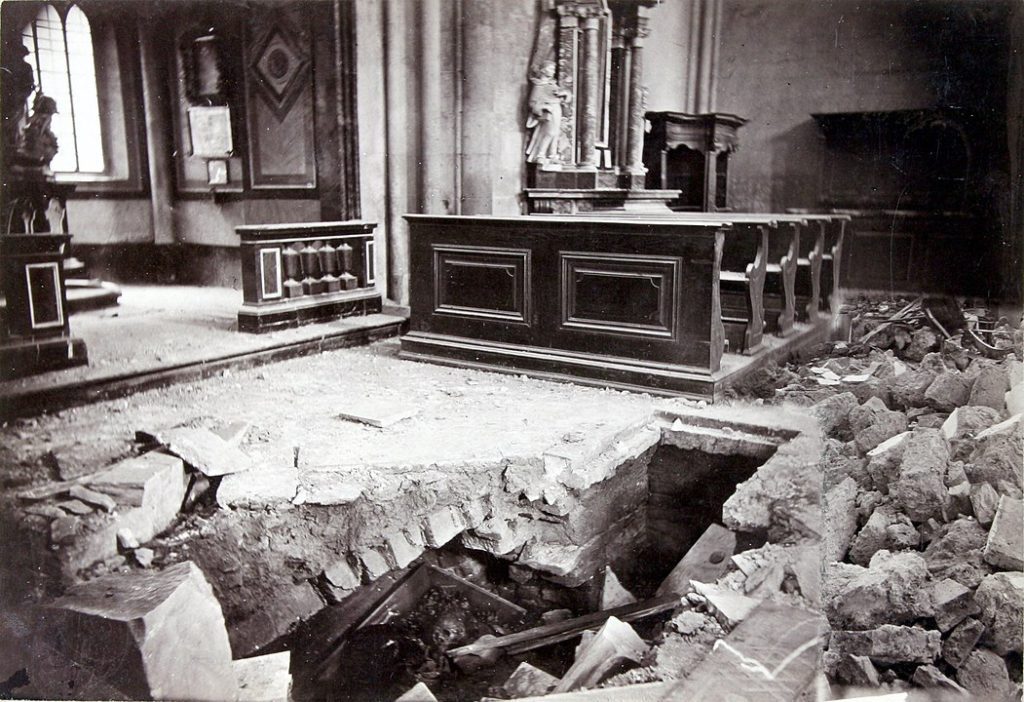
The city was fighting two enemies, two parallel crises that contradicted each other, All of us remember the mothers dressed in nightgowns hugging their newborn babies in a car park in freezing temperatures after a damaged maternity hospital was evacuated. The women and children were moved along with incubators to a new location with the help of the army, health workers, volunteers, and football fan clubs.
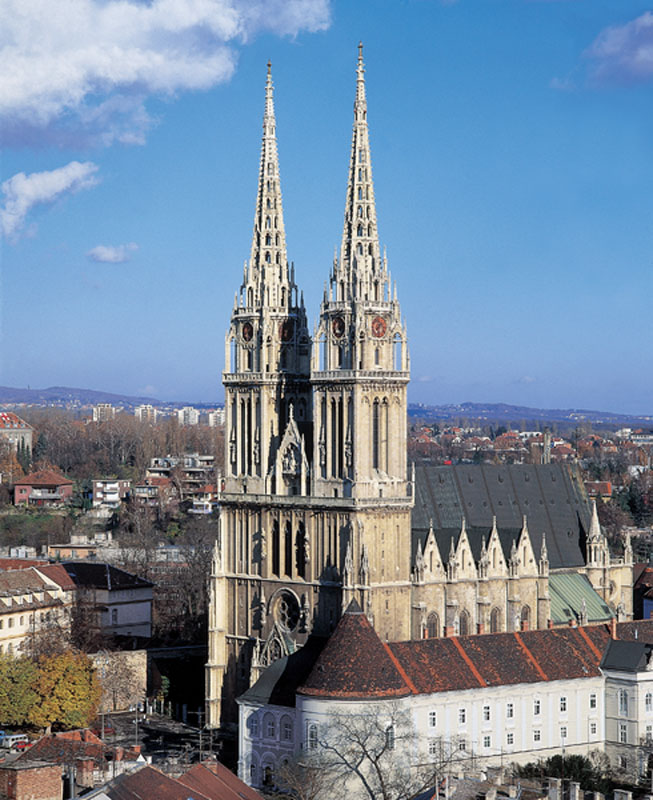
Many cultural institutions and private buildings cracked, and walls and rooftops including educational facilities, museums sustained significant damage, and the famed Zagreb Cathedral - the city’s most famous landmark site – with the top of one of its two spires collapsing.
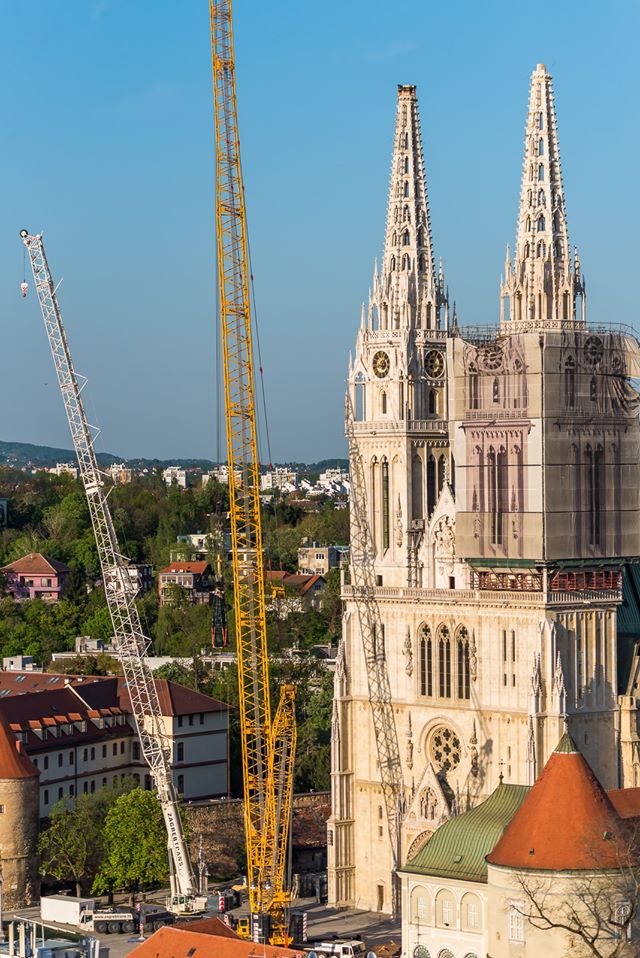
Zagreb Cathedral’s two 350-foot-tall spires make it the tallest building in the city. On that Sunday, however, the top of the southern tower came crashing down, striking the Archbishop’s Palace on its way. The base of the Roman Catholic cathedral dates back to the 11th century, when the Diocese of Zagreb was established. Construction probably began around 1100 and was completed by the year 1217. In 1242, the Mongols invaded the city and heavily damaged the cathedral, which later underwent a major reconstruction. During the 16th century, the city fortified the cathedral with walls and towers; by the 17th century, its square renaissance bell tower was complete. After a major earthquake struck in 1880, the cathedral was completely rebuilt. The Zagreb Cathedral (Croatia) rebuilding in the Neo-Gothic style was led by Hermann Bollé. Workers finished reconstructing the Neo-Gothic structure, including its iconic pair of gold-topped spires, in 1906.
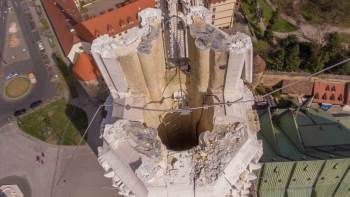
After 140 years, another earthquake damaged its iconic pair of spires on 22nd of March 2020. The architect, Hermann Bollé, whose 94th anniversary of his death is marked on April 17th, precisely the day when one of his spires was carefully taken down for repairs,
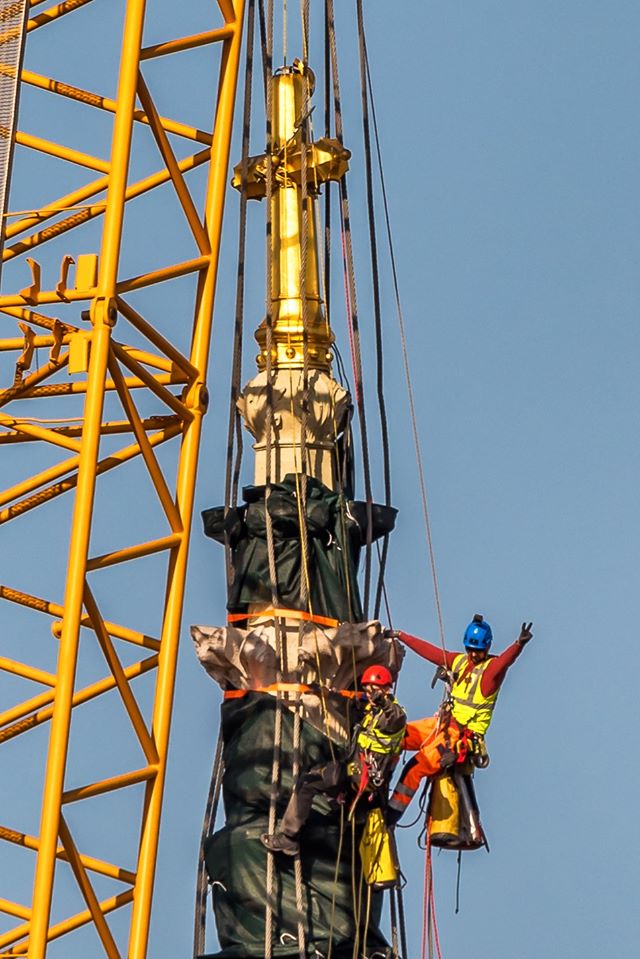
A part of the north spire of Zagreb's historic cathedral, 13.5 metres tall and weighing some 30 tonnes, was removed as a result of structural engineers' decision. The top of the damaged northern spire was removed to prevent it from collapsing and causing damage to the cathedral and the area around it. After the tower was separated, a massive crane lowered it to the ground. The part was removed following a controlled explosion at around 6 pm. After repairs, the tip of the spire will be returned to the northern tower.
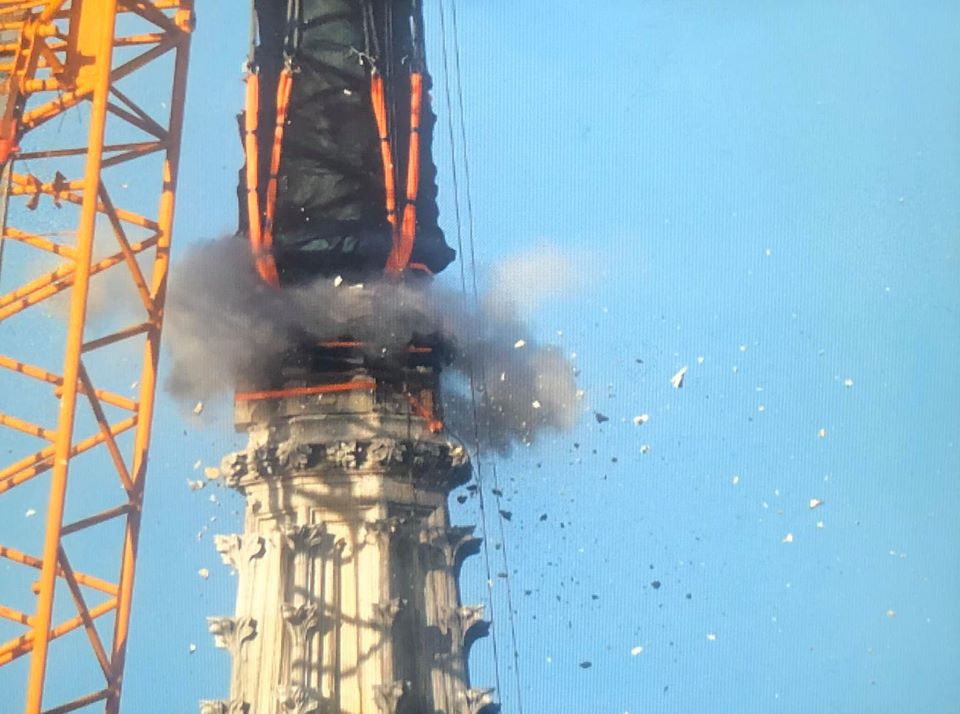
Thanks to multifaceted Croatian Army Climbers, Croatian Army Engineering Unit, led by Lieutenant Colonel Miroslav Car, Military Intelligence, led by the Commander-Major Mario Maslov, supported by a group of cathedral restoration experts led by Mons. Ivan Hren who participated in this historic endeavour,
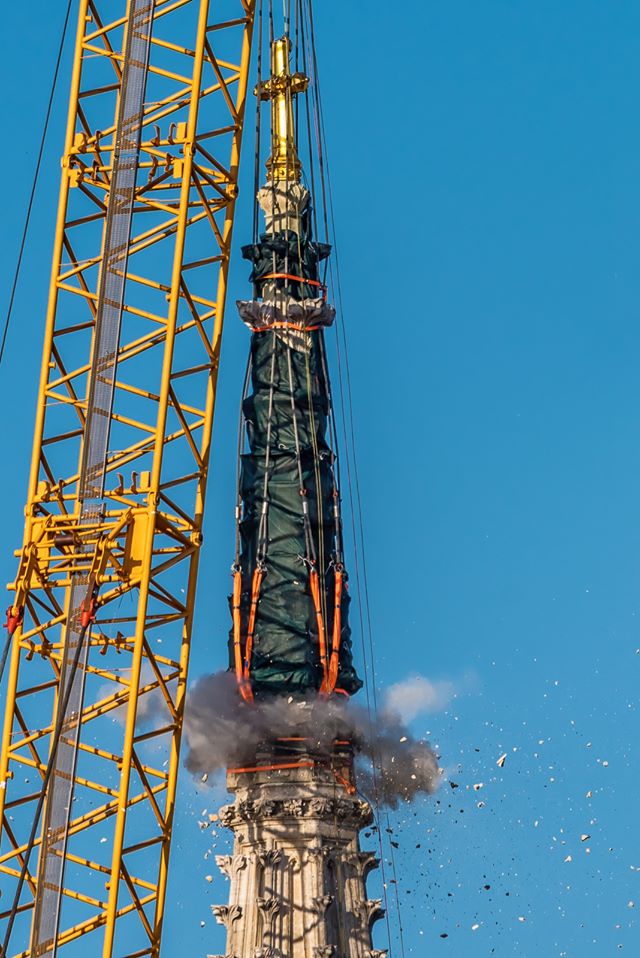
It was a special historic and emotional day of all of us. For the memory.
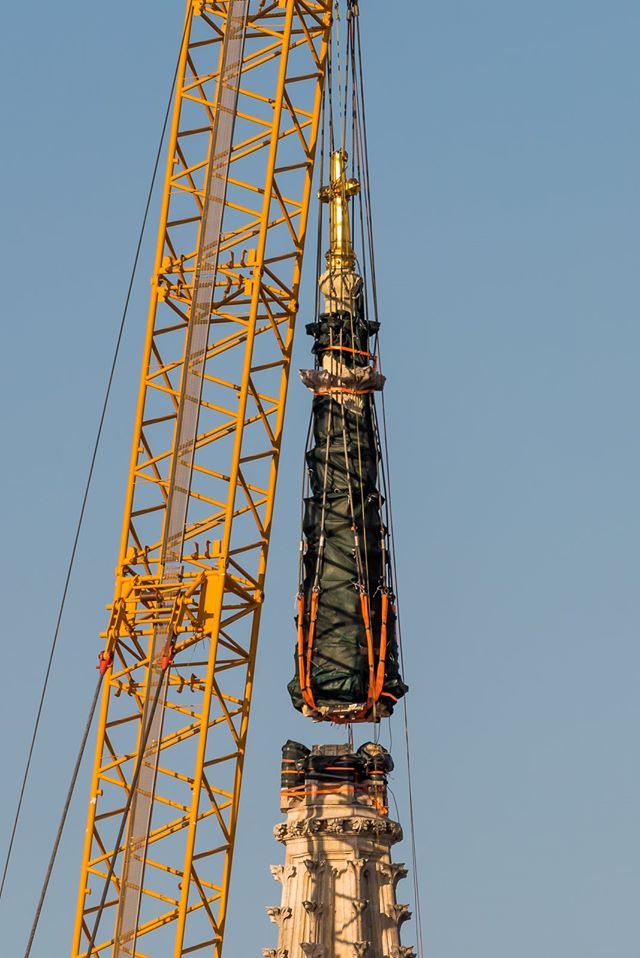
Photos: Alan Grubelic, Cathedral Archive, Josip Ninković, Sanjin Strukić, Croatian television Archive, Public Photos Service.
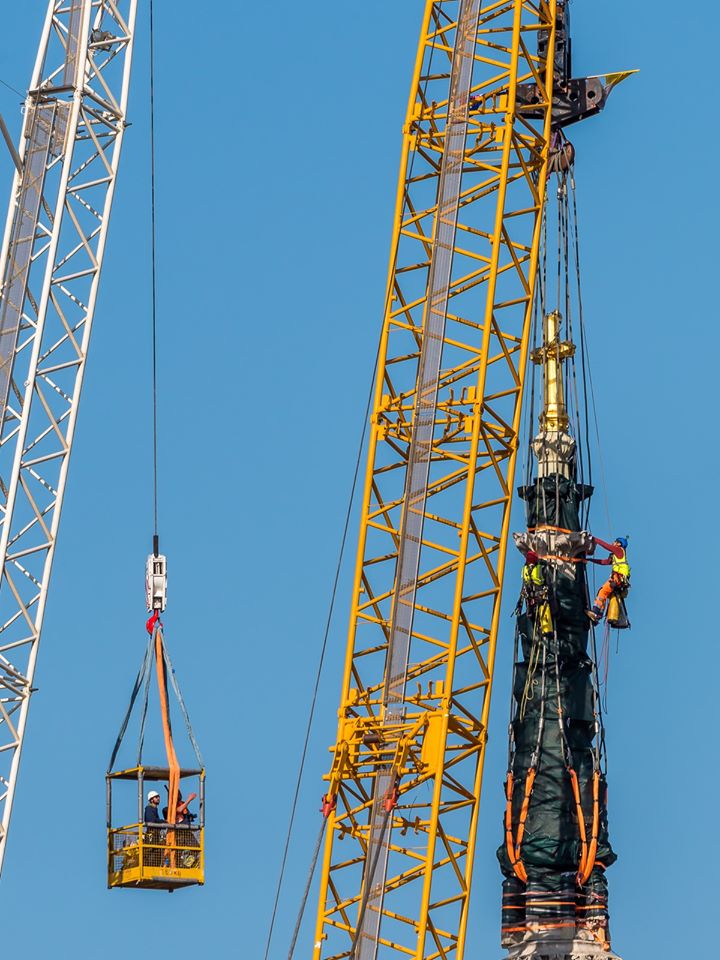
Thanks, Marijana, stay safe and see you in Zagreb soon.
For more on the Zagreb earthquake and aftermath, check out the dedicated TCN section.
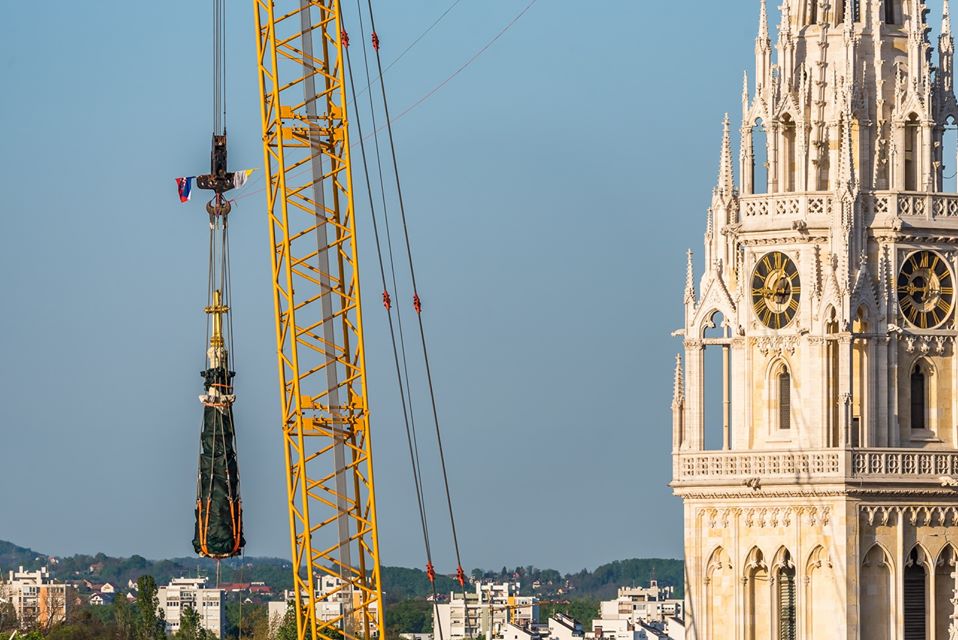
Varbonj za Zagreb Earthquake: 100,000 Kuna Za Krizen Proceeds
April 22, 2020 - The final chapter of Za Krizen 2020, as the Varbonj za Zagreb earthquake appeal reaches 100,000 kuna. A message from cross-bearer Matteo Bratanic.
As previously reported on TCN, the UNESCO-listed Za Krizen religious procession on Maundy Thursday was one of the few events to be allowed to take place in this corona era, albeit in strictly controlled circumstances (you can see the detailed TCN eye-witness account of the 9-hour procession).
Matteo Bratanic, the Vrbanj cross-bearer, his family and the people of the village of Vrbanj decided to donate all the proceeds from Za Krizen 2020, including a monetary value on all gifts received, to victims of the devastating earthquakes in Zagreb last month. As I wrote last week, Matteo's father Toni, explained a little more about the Varbonj za Zagreb campaign (Varbonj is a dialect word for Vrbanj), as well as inviting people to contribute until last Sunday.
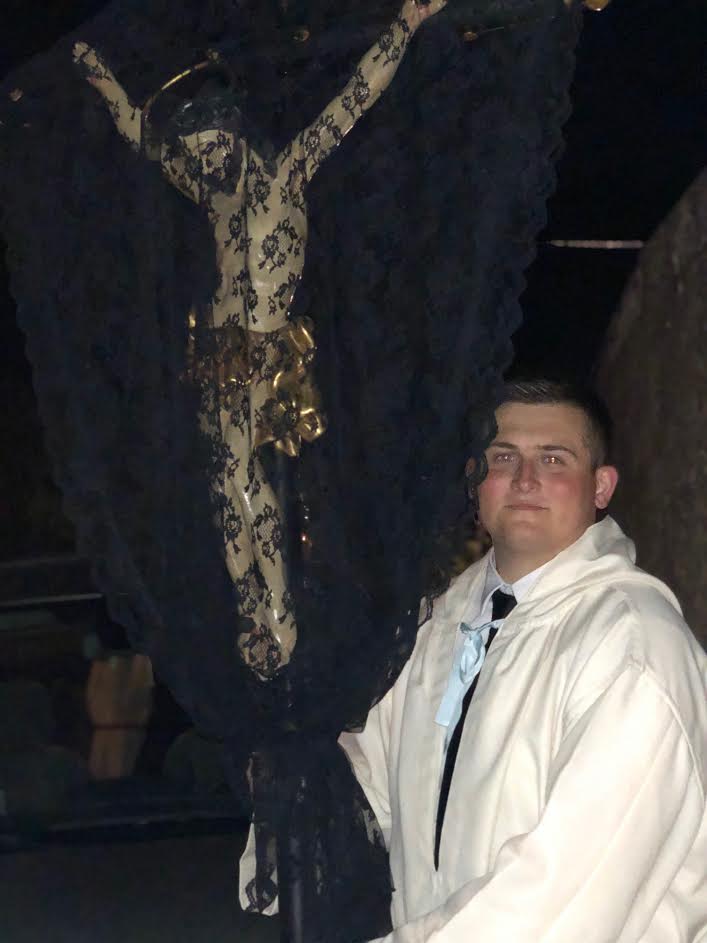
Damaged But Resilient: Brilliant Zagreb Tourist Board Virtual Campaign
April 19, 2020 - How to respond to corona on the outside, earthquakes on the inside and economic collapse all around if you are in the tourism business? Respect to the Zagreb Tourist Board and their new online campaign.
This is a period of our lives that none of us will ever forget. A period with such seismic change and total shock for all of us, where we are coming to terms that things will never be quite the same. In terms of shocks and the embedded memory, it is up there with 9/11, the 2008 crash and (for some reason, even though I have no interest in the Royal Family) the death of Lady Diana.
And in this time of crisis - whether that crisis be health, economic, mental or social unrest, a combination of these four things or perhaps all rolled into one - there is arguably not a person on the planet who has not been affected by the corona crisis. And with so many stories of personal misery and suffering, it is totally understandable that people do not have the time or capacity to take on the pain and suffering of others.
But if you do have the time and the capacity to hear about what others are going through, I want to tell you about an incredible city with a big heart, which has suffered much more than most, and whose resilience and determination to survive and prosper is beyond admirable.
The city is Zagreb, the City of One Million Hearts.
And the online response of the Zagreb Tourist Board and the Croatian National Tourist Board has been magnificent.
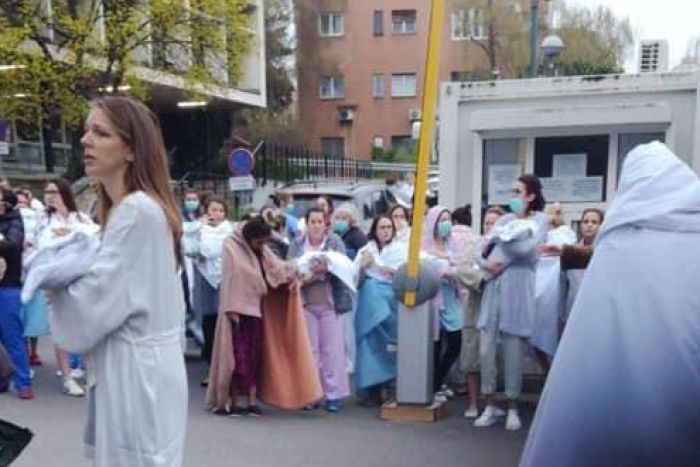
With the corona crisis at its height, the Croatian capital was rocked by a series of earthquakes on March 22, as reported by TCN. Those harrowing pictures of the poor mothers and their newborns went all over the world.
TCN has covered the earthquake and its aftermath extensively, and you can see the entire coverage here, but for this article I want to focus on the response of both the national and Zagreb tourist board in its online handling of the tragedy. Because it was magnificent.
The same day as the earthquake, the national tourist board posted this very moving video, above, with the following message:
"This is my city, my streets, my love. My city with a million hearts... I hope we will smile again, drink coffee with friends and, soon, welcome new friends from around the world who will fall in love with Zagreb, just like I did."
A similar message can be seen on the homepage of the Zagreb Tourist Board.
And then this, the very symbol of the Zagreb skyline, shared by the Croatian National Tourist Board, the removal of the top of the damaged cathedral spires.
Symbols of the Zagreb skyline, the Zagreb Cathedral...
Even without both spires, still, beautiful and strong...
Video by RTL.hr
Thank you RTL.hr
#ZagrebStayStrong #Zagreb #CroatiaFullOfMemories #Croazia #Croatia
Heartbreaking, heartwarming, emotions all over the place. But once one looks at things from a more detached view, how is the Zagreb Tourist Board responding, and how to promote tourism in an age when nobody is travelling?
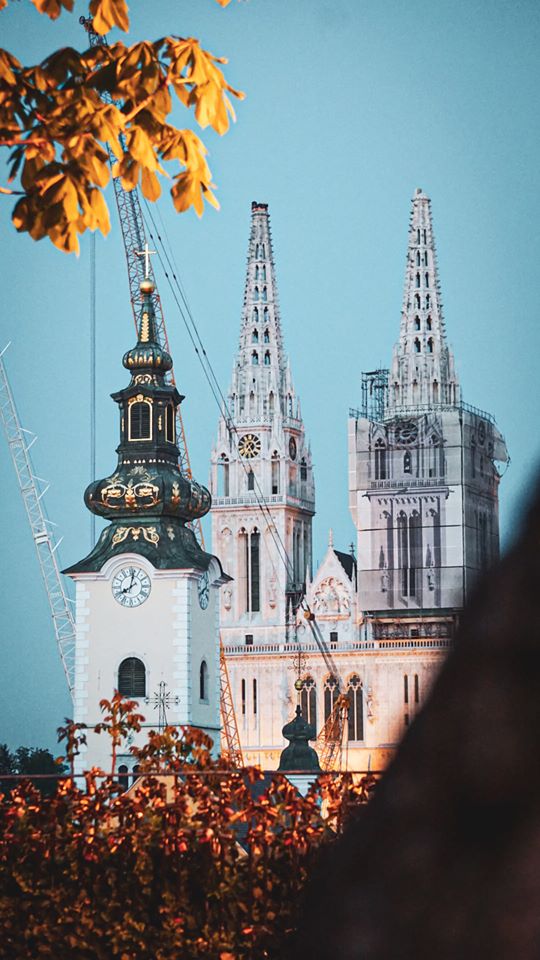
The Zagreb Tourist Board Facebook page became a focal point for the pictures of its residents. Some excellent pictures, such as this one from Bojan Rakic. Check out the Zagreb Tourist Board Facebook page for more.
A few weeks ago, I wrote an article called Tourism in the Corona Age: 10 Virtual Ways to Discover Zagreb. The article looks at the online resources available to explore Zagreb virtually for a future visit, a strategy which the Zagreb Tourist Board has been quietly rolling out in recent weeks, using hashtags #DreamNowTravelLater and #ZagrebLovesYou.
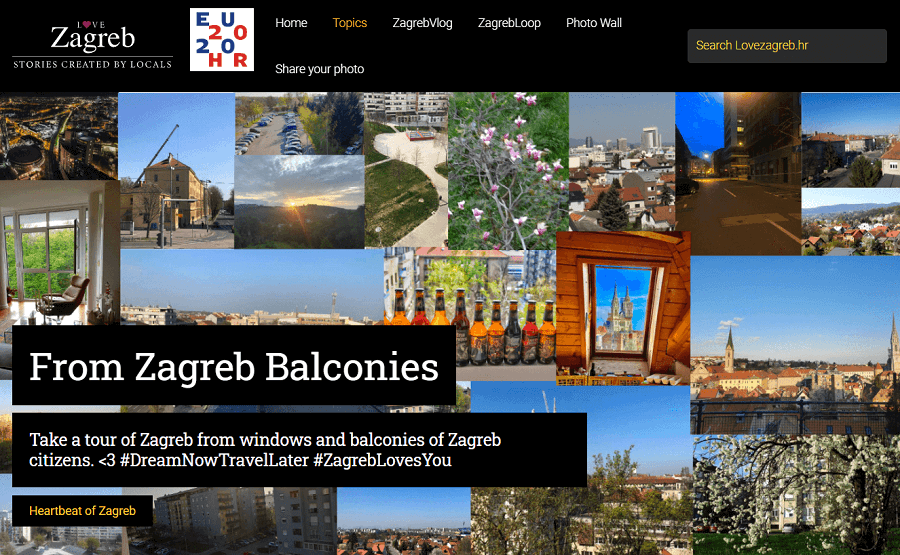
It includes great campaigns such as 'From Zagreb Balconies' where citizens have been sending their balcony views of the Croatian capital - a delightful cross-section of shots of the city, which you can explore here.
The Zagreb Tourist Board has also created a wonderful virtual section on its website called What to Do at Home.
This section is an excellent collection of ways to enjoy Zagreb virtually, from museum tours to theatre productions. You can check it out here.
One of the best resources for understanding the complete situation in this beautiful city under attack from corona and earthquakes is the Love Zagreb blog, another Zagreb Tourist Board project online, which brings the heartbeat of the city into your living room. There were some fabulous texts written in recent weeks. If I could pick out a few to check out, they would be:
Zagreb - A City With a Spirit of Steel
In The Times of Hardship, We Stick Together
You Can Still Have Fun While Staying Indoors
Zagreb's Virtual Farmers' Market
What people perhaps are not aware of is what is happening behind the scenes. I have had several messages from Zagreb tour guides saying that the tourist board had been in contact to discuss how best to promote the city and their agency with whatever online tools the agency had.
Here is one such resource, which our TCN interns filmed quite independently recently, a video guide to the unique Secret Zagreb Badass Women of Zagreb Tour.
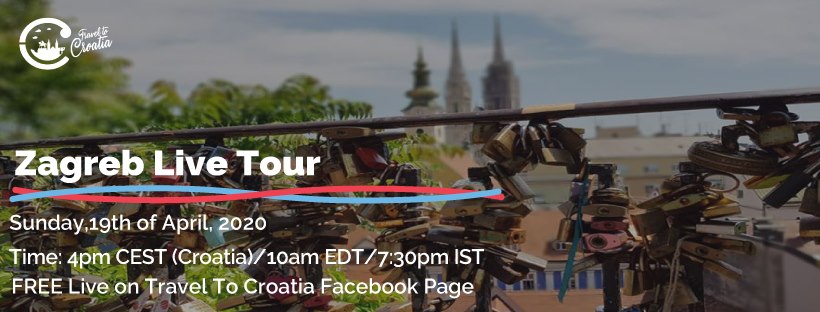
And how about THIS? At 16:00 Croatian time today, there will be a live and free walking tour of Zagreb in English. You can follow it live on Facebook.
Zagreb, the City of a Million Hearts, stay strong in this incredibly trying time.
I, and many other foreigners, look forward to seeing you soon in the flesh.
You can learn more about the virtual and non-virtual offer of the Zagreb Tourist Board on the official website.


